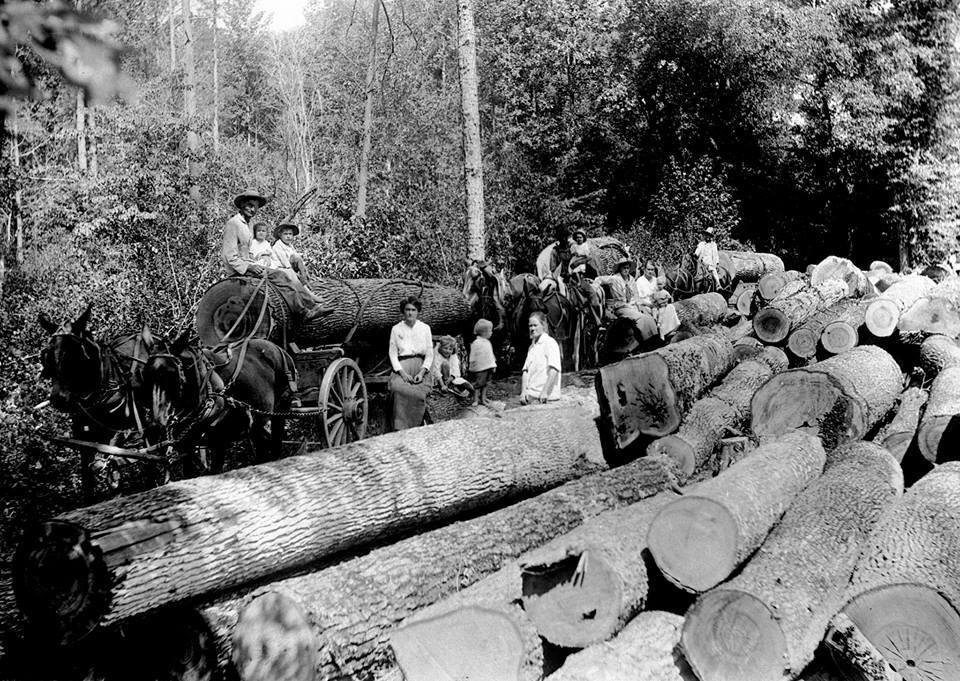
The Encyclopedia of Oklahoma History and Culture
FORESTRY CULTURE.
Twentieth-century Oklahoma forestry culture draws from two general historical influences, both becoming factors in late nineteenth and early twentieth centuries. One important influence is from the early lumber industry in southeast Oklahoma. Another is the development of a national conservation ethic that came to Oklahoma shortly after the lumber industry's arrival.
Shortly after the Civil War ended, the nation embarked upon a period of urban and industrial development that called for large quantities of lumber. By 1880 migrating lumber interests began to turn attention from eastern and lake states forests to the vast virgin forests of the South. Attracted by high-quality southern pines, these interests began bringing their mills, railroads, and associated company towns to Oklahoma about the time of statehood in 1907. Especially influential among these early lumber industry developers were the Dierks brothers, founders of the Choctaw Lumber Company.
Life in the early lumber towns revolved almost entirely around the milling operations, with most citizens earning their livelihoods either directly or indirectly from lumber manufacturing. Wright City's history is perhaps the best example of early Oklahoma forest culture. In 1909 the Choctaw Lumber Company chose to build a high-capacity sawmill on the site because the topography was suitable for mill and town construction and because it had abundant water nearby in the Little River. After constructing a railroad to the site from Valliant, mill construction began, employing about three hundred workers living on site in tents. Population grew to about twelve hundred following mill completion in 1910.
The Choctaw Lumber Company owned the mill, the railroad, and the town, including all homes and stores. Everyone living in Bismark worked in some fashion for the Choctaw Lumber Company and was dependent on its prosperity. Loggers took their crosscut saws and teams of mules or oxen to the pine forests to harvest the logs. Logs were loaded on railroad cars and taken to the mill to be manufactured into lumber. Logging operations opened up land for agriculture. Merchants leased company buildings to provide the loggers and mill workers with services such as barbershops, cafés, clothing and food markets. Nearly everyone lived in housing rented from the company.
Most of the logging in the United States until the early twentieth century was accomplished without thought of managing for a sustainable resource. Beginning in the late nineteenth century however, concerned individuals in the nation began to realize not only that forests were being depleted, but also that forest conditions were tied to other important values such as water quality. In Oklahoma the Dierks brothers instituted a program of selective cutting to encourage reforestation in 1914 after realizing that only about a ten-year supply of timber remained for their operations. Establishment of what is now the Oklahoma Department of Agriculture Forestry Services in 1925 and the Forestry Department at Oklahoma State University in 1946 has continued development of forest conservation theory and practice. The Forest Heritage Center at Beavers Bend State Park, dedicated in 1976, fosters appreciation of both old and new in Oklahoma forest culture.
See Also
FARMING CULTURE, FOLKLIFE, FORESTRY, MILL TOWNS, OIL-FIELD CULTURE






